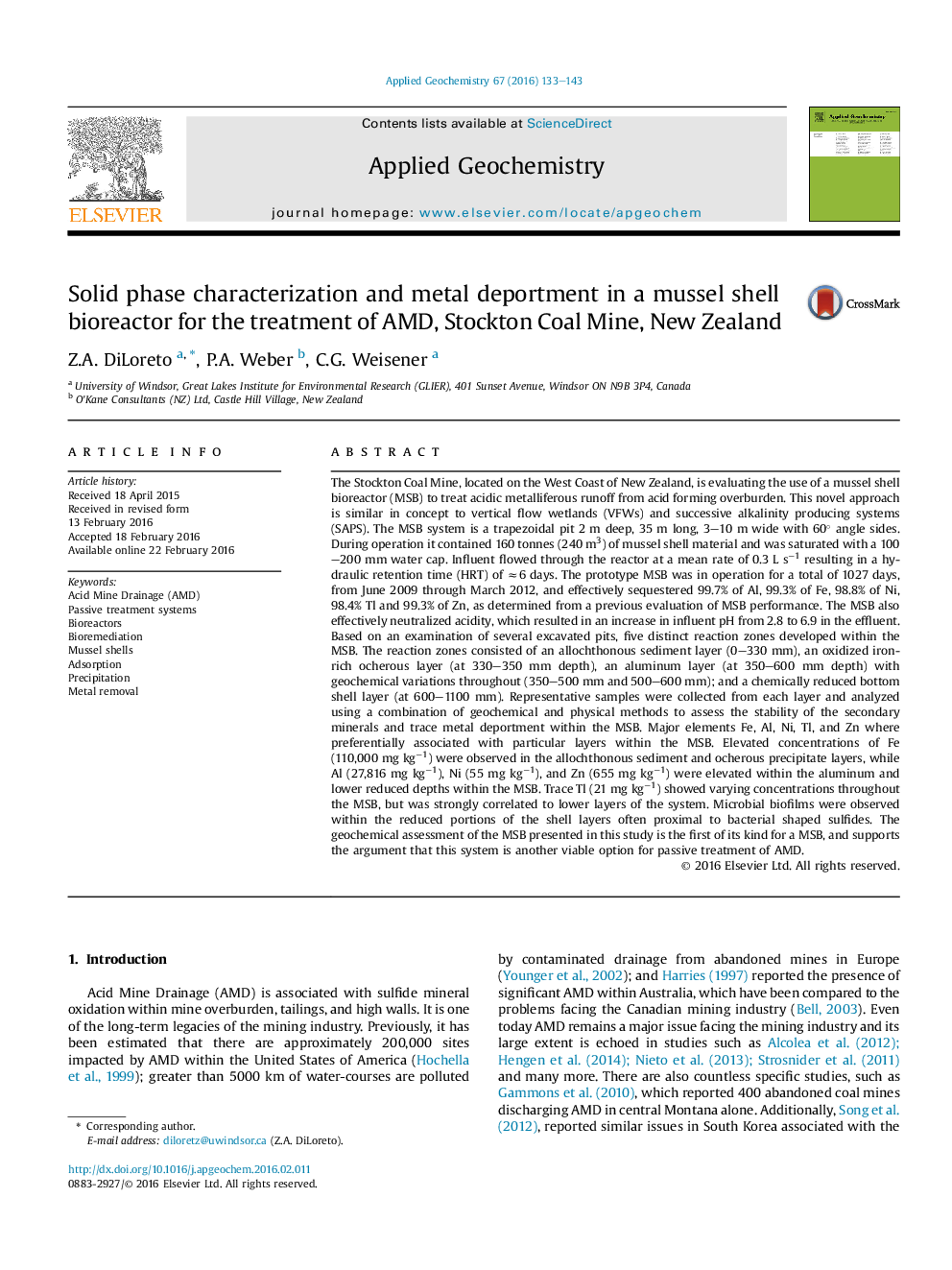| کد مقاله | کد نشریه | سال انتشار | مقاله انگلیسی | نسخه تمام متن |
|---|---|---|---|---|
| 4435605 | 1620224 | 2016 | 11 صفحه PDF | دانلود رایگان |

• A mussel shell matrix bioreactor using vertical flow wetland technology was used for the passive treatment of AMD.
• Selective extractions targeted metal deportment as a function of the reaction layer within the mussel shell bioreactor.
• The mussel shell bioreactor effectively removes 99% of metals and neutralizes effluent to circum neutral pH.
• Mussel shell bioreactors are a cost effective novel method for passive AMD treatment.
The Stockton Coal Mine, located on the West Coast of New Zealand, is evaluating the use of a mussel shell bioreactor (MSB) to treat acidic metalliferous runoff from acid forming overburden. This novel approach is similar in concept to vertical flow wetlands (VFWs) and successive alkalinity producing systems (SAPS). The MSB system is a trapezoidal pit 2 m deep, 35 m long, 3–10 m wide with 60° angle sides. During operation it contained 160 tonnes (240 m3) of mussel shell material and was saturated with a 100–200 mm water cap. Influent flowed through the reactor at a mean rate of 0.3 L s−1 resulting in a hydraulic retention time (HRT) of ≈6 days. The prototype MSB was in operation for a total of 1027 days, from June 2009 through March 2012, and effectively sequestered 99.7% of Al, 99.3% of Fe, 98.8% of Ni, 98.4% Tl and 99.3% of Zn, as determined from a previous evaluation of MSB performance. The MSB also effectively neutralized acidity, which resulted in an increase in influent pH from 2.8 to 6.9 in the effluent. Based on an examination of several excavated pits, five distinct reaction zones developed within the MSB. The reaction zones consisted of an allochthonous sediment layer (0–330 mm), an oxidized iron-rich ocherous layer (at 330–350 mm depth), an aluminum layer (at 350–600 mm depth) with geochemical variations throughout (350–500 mm and 500–600 mm); and a chemically reduced bottom shell layer (at 600–1100 mm). Representative samples were collected from each layer and analyzed using a combination of geochemical and physical methods to assess the stability of the secondary minerals and trace metal deportment within the MSB. Major elements Fe, Al, Ni, Tl, and Zn where preferentially associated with particular layers within the MSB. Elevated concentrations of Fe (110,000 mg kg−1) were observed in the allochthonous sediment and ocherous precipitate layers, while Al (27,816 mg kg−1), Ni (55 mg kg−1), and Zn (655 mg kg−1) were elevated within the aluminum and lower reduced depths within the MSB. Trace Tl (21 mg kg−1) showed varying concentrations throughout the MSB, but was strongly correlated to lower layers of the system. Microbial biofilms were observed within the reduced portions of the shell layers often proximal to bacterial shaped sulfides. The geochemical assessment of the MSB presented in this study is the first of its kind for a MSB, and supports the argument that this system is another viable option for passive treatment of AMD.
Journal: Applied Geochemistry - Volume 67, April 2016, Pages 133–143